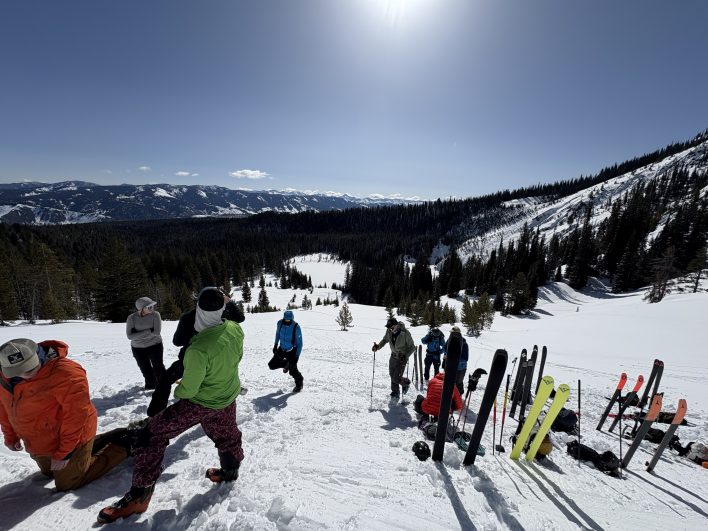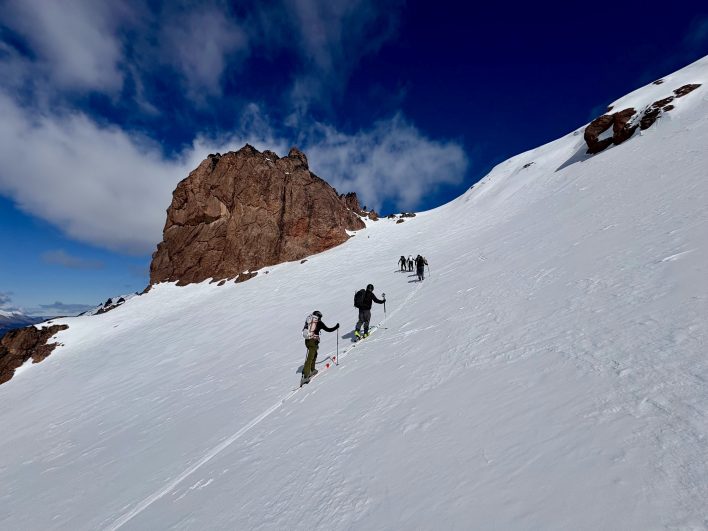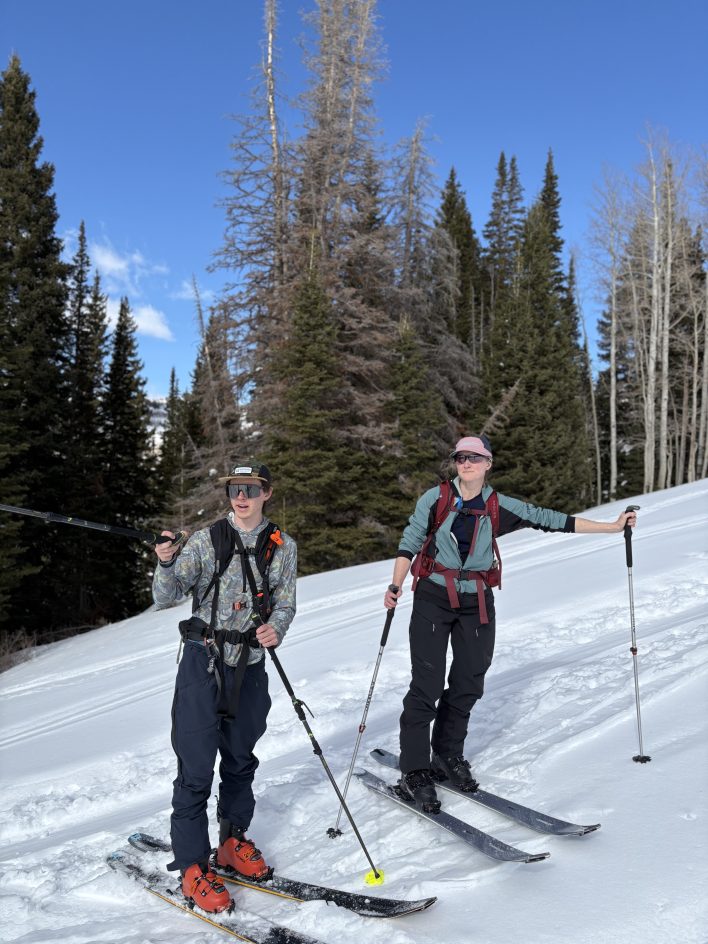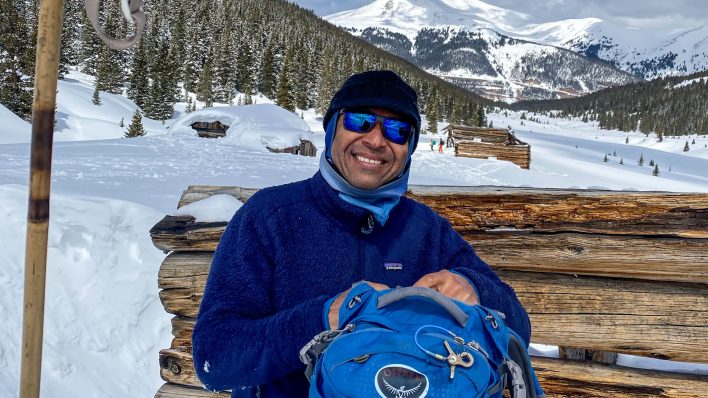Proper planning is essential for a safe and successful backcountry ski trip. Once at the trailhead, effective management of yourself and your group throughout the day will further improve safety and your enjoyment of the experience.
Trailhead Procedures

Before starting, it’s important to huddle in the parking lot and have a brief discussion about the day’s goals, snow stability, key decision points, and individual risk tolerance. This ensures that everyone is on the same page and that group norms are established.
What you don’t want to do is hit the ground running and assume everyone is on the same page in terms of what your plan is.
Designate a leader—ideally the person who planned the trip—to monitor group progress and decisions. This is important, particularly for groups that have not toured together before, or which have new members. Having a recognized leader is one of the biggest advantages of skiing with a professional guide.
Lastly, confirm that each member has all of the required personal safety gear and your group has additional equipment like a first aid kit, two-way radios and emergency satellite communication dispersed among the group. Do a transceiver check to make sure avalanche beacons are on and transmitting.
On the Trail

Pace: Set a comfortable pace everyone can maintain. Stop as needed to adjust clothing and prevent overheating or chilling. If your group norm is to stick together throughout the day, your fastest pace is that of the slowest person—it can help to put that person up front to keep the pace. Professional guides call this “client pace.”
If you are slower than others, maintain a steady pace rather than trying to keep up by overexerting. Conserve energy by moving efficiently, eating on the go, and transitioning quickly between uphill and downhill modes.
Lead and Tail: Assign a lead to set the track and make route decisions and a tail to ensure no one is left behind. Maintain visual or voice contact between the lead and tail. Rotate the lead position if trail breaking is difficult.
It helps if your lead skier are among the more experienced members of your group, not necessarily the fittest. It’s also wise to have an experienced member at the tail. Trouble always seems to float to the back of a group, and an experienced tail can help a newer tourer fix an equipment problem or keep an eye on a group member who is lagging.
It’s important to maintain voice contact between the lead and tail. If you aren’t carrying radios that means the lead should be able to hear a shout from the tail if there’s a problem that needs attention.
Regrouping: Stop periodically to rest, eat and hydrate. Make sure to regroup at decision points so everyone can weigh in.
Communication: Involve everyone in key route decisions. Seek group consensus whenever possible. Set the norm from the get-go that anyone in the group should feel comfortable speaking out. Watch out for the trap known as an “expert halo” in which group members defer to the perceived expert and stop making or contributing to the decision-making process.
Monitor Conditions: Continuously assess conditions. Are the snow and weather as expected? Is anyone struggling? Should plans be adjusted?
The most important question to ask while traveling is: “If we continue, will we end up in avalanche terrain?” If the answer is no, consider all safety factors before proceeding. If the answer is yes, stop. Bring the group in and encourage discussion.
Consider how to most safely manage the group in the terrain. Should you spread out on the skintrack with 30-meter spacing if you are passing undeath a cornice? Should you position a member to respond if someone inadvertently kicks off a slab on the descent? Are there islands of safety you can use to your advantage?
Timing: Track time and daylight. Start early and plan to return with a buffer before dark.
Common Group Management Errors

Avoid the following mistakes that can turn a trip into a serious problem:
- Traveling alone. There will be no one to help if something goes wrong.
- Allowing members to separate from the group. Solo travel increases risk.
- Pushing to exhaustion, which impairs judgment.
- Rushing due to poor time management, especially near dark or in complex terrain.
- Failing to create a group environment where members speak up about concerns without fear of judgment or group pressure.
Debrief
At the end of the trip, discuss what worked and what didn’t.
1. Were we surprised by conditions or hazards today?
2. Could we have anticipated the conditions or hazards better?
3. Did we communicate well as a group?
4. Highlight which decisions went well.
5. In hindsight, would we do anything differently?
The debrief helps you identify lessons to apply on future outings.
Becoming a skilled backcountry skier involves more than skiing ability. It requires sound planning, awareness and decision making. Every trip offers an opportunity to learn and improve.
Have fun and be safe this winter!
Brett St. Clair, with Craig Evanoff, is the author of Tips for Beginning Backcountry Skiers. Brett can be reached for questions or comments at brett@wskyline.com. If you’re an experienced backcountry skier but know someone who’s new to the sport and might find these tips useful, why not share this with them? More tips, skills and educational articles can be found within the pages of Backcountry Magazine. Subscribe to read them when they’re first published in print.











Related posts: